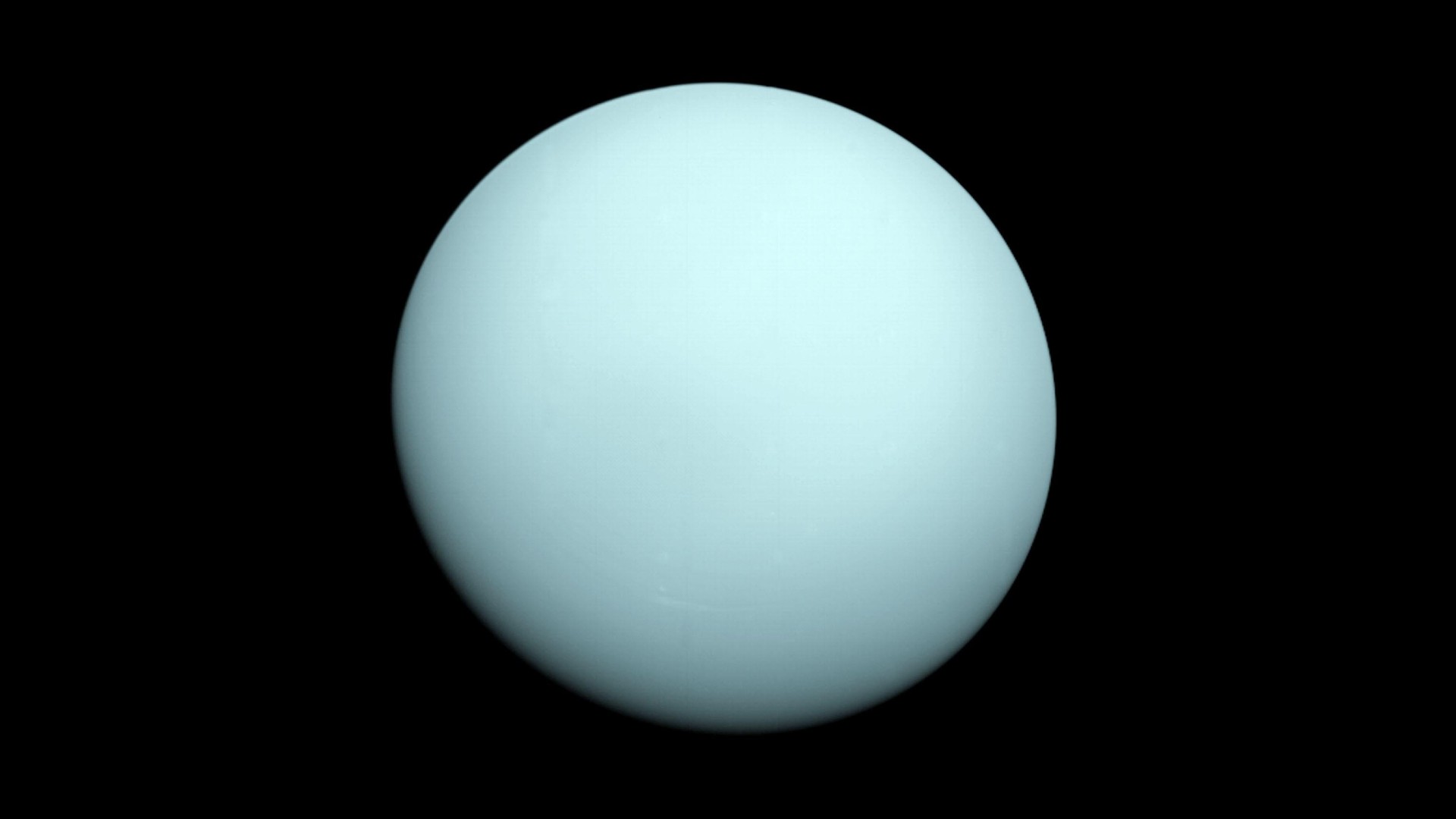NASA really wants to probe Uranus and could start planning next year
But we probably won't reach the planet until the 2040s.

We still have so much to learn about our cosmic neighborhood.
There's no doubt that we've learned a lot about our solar system over the past six and a half decades of spaceflight, but there are still mysteries lurking around every corner. One of the biggest ones is the planet Uranus. Other than a brief flyby by NASA's Voyager 2 spacecraft in 1986, we haven't visited the planet at all.
But that's soon going to change. According to this year's decadal survey by the National Academies of Sciences, Engineering, and Medicine, a flagship orbiter and probe mission to Uranus should be NASA's main planetary science project of the next decade. (A decadal survey is report that polls the scientific community on top research priorities — it's prepared every 10 years.) At a virtual town hall on Aug. 18, Dr. Lori Glaze, director of NASA's Planetary Science Division, announced a very rough timeline for the potential Uranus mission.
Related: Uranus by 2049: Here's why scientists want NASA to send a flagship mission to the strange planet
"We are working towards initiating ... some studies of a Uranus orbiter probe mission no later than fiscal year 2024. We will explore a range of complexity and cost options as part of those studies," she said, later adding that the studies could even commence as early as fiscal year 2023.
The Uranus Orbiter and Probe (UOP), as this mission concept is known, would see a spacecraft spend several years orbiting the ice giant, with a potential probe making a dive down through Uranus' atmosphere. Not only would this research enhance our knowledge of the planet itself, but it could also give us insight into the evolution of ice giant systems, which are found throughout our galaxy.
Such flagship missions, of course, take plenty of research and planning — the UOP is still just a concept and not a mission quite yet. The kickoff in FY 2024 would simply be the early phases of research to figure out the potential shape of the mission. "We need to make sure that we are putting in place a mission that can be implemented and executed," said Glaze.
Get the Space.com Newsletter
Breaking space news, the latest updates on rocket launches, skywatching events and more!
Though there's no formal timeline yet, Glaze did indicate that a launch could happen as soon as the early 2030s, which would place the spacecraft's arrival at Uranus sometime in the 2040s or beyond. It will take anywhere from 12 to 15 years for it to traverse the nearly 2 billion miles (3.2 billion kilometers) between Earth and Uranus.
"I think it's fantastic now that we have very clear guidance from the decadal survey on the highest priority next flagship, and the fact that they've specifically identified Uranus as the ice giant to visit," said Glaze. "We're really excited about this."
Follow Stefanie Waldek on Twitter @StefanieWaldek. Follow us on Twitter @Spacedotcom and on Facebook.
Join our Space Forums to keep talking space on the latest missions, night sky and more! And if you have a news tip, correction or comment, let us know at: community@space.com.

Space.com contributing writer Stefanie Waldek is a self-taught space nerd and aviation geek who is passionate about all things spaceflight and astronomy. With a background in travel and design journalism, as well as a Bachelor of Arts degree from New York University, she specializes in the budding space tourism industry and Earth-based astrotourism. In her free time, you can find her watching rocket launches or looking up at the stars, wondering what is out there. Learn more about her work at www.stefaniewaldek.com.









